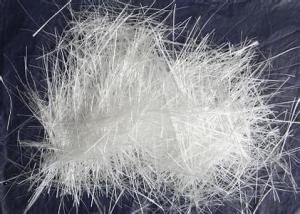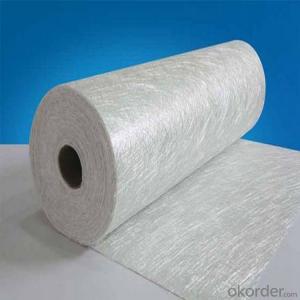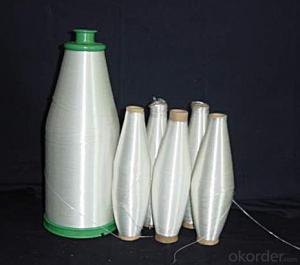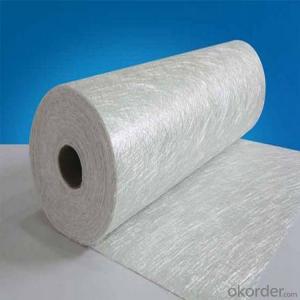Fiber Glass Chopped Strands For BMC
- Loading Port:
- China Main Port
- Payment Terms:
- TT or LC
- Min Order Qty:
- -
- Supply Capability:
- -
OKorder Service Pledge
OKorder Financial Service
You Might Also Like
1.Brief Introduction
Chopped Strands for BMC are compatible with unsaturated polyester, epoxy resin and phenolic resins.
The end-use applications include transportation, building & construction, electronic & electrical, mechanical, and light industry.
2.Product Features
Extremely low resin demand, delivering low viscosity to BMC paste
High impact strength; High LOI rate
High strand stiffness; Compatible with rubber
3.Product Specifications
Property | Fibre diameter | Moisture Content | Size Content | Chop |
(%) | (%) | (%) | (%) | |
Mathods | IS01888 | ISO3344 | ISO1887 | |
3mm | ±10 | ≤3.0 | 0.1±0.05 | 98 |
6mm | ||||
9mm | ||||
12mm |
Special specification can be produce according to customer requirements.
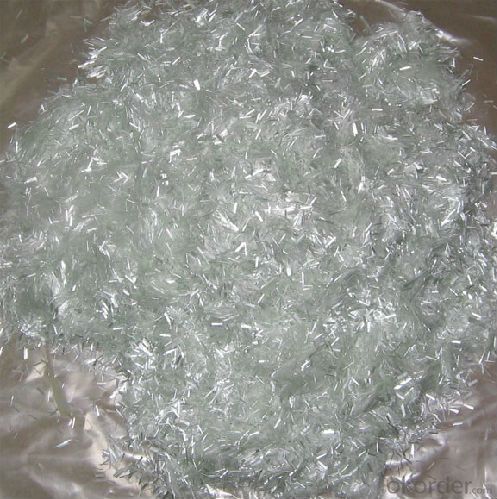
4.FAQ
Packaging:
Each bag can be taken (15-25kgs)。 Could also take a big container bag.
Storage:
Unless otherwise specified, It should be stored in a dry, cool and rain-proof area. It is recommended that the room temperature and humidity should be always maintained at 15℃~35℃ and 35%~65% respectively.
- Q:Can fiberglass chopped strand be used in insulation applications?
- Indeed, insulation applications can make use of fiberglass chopped strand. Due to its exceptional thermal resistance properties, fiberglass chopped strand is frequently employed as a material for insulation. Its structure adeptly captures air pockets, effectively diminishing heat transfer and sustaining a consistent temperature within the insulated area. Moreover, the lightweight, durable, and moisture-resistant nature of fiberglass chopped strand insulation renders it appropriate for various insulation needs. Whether it is for residential structures, commercial establishments, or industrial facilities, fiberglass chopped strand insulation offers a reliable solution for thermal insulation demands.
- Q:Is fiberglass chopped strand suitable for the production of playground equipment?
- Yes, fiberglass chopped strand is suitable for the production of playground equipment. It offers excellent strength, durability, and resistance to harsh weather conditions, making it a reliable material choice for playground structures. Additionally, fiberglass chopped strand can be easily molded into various shapes and designs, providing flexibility in creating customized playground equipment.
- Q:Is fiberglass chopped strand suitable for high-temperature applications?
- No, fiberglass chopped strand is not suitable for high-temperature applications.
- Q:How does the moisture absorption of fiberglass chopped strand affect its performance?
- The moisture absorption of fiberglass chopped strand can negatively affect its performance. When fiberglass absorbs moisture, it can weaken the material and reduce its overall strength. Moisture absorption can also lead to dimensional instability, causing the material to expand or contract, which can affect its fit and function in various applications. Additionally, moisture can promote the growth of mold or mildew, compromising the integrity of the fiberglass. Therefore, it is crucial to minimize moisture absorption in order to maintain the optimal performance of fiberglass chopped strand.
- Q:How is fiberglass chopped strand used in the wind energy sector?
- Fiberglass chopped strand is extensively used in the wind energy sector for various applications. One primary use of fiberglass chopped strand in this industry is for reinforcing the composite materials used in wind turbine blades. Fiberglass chopped strand is mixed with a resin matrix, such as epoxy or polyester, to create a composite material that offers excellent strength, durability, and lightweight properties. These composites are then used to manufacture wind turbine blades, which need to withstand extreme environmental conditions while maintaining optimal performance. The chopped strands of fiberglass provide reinforcement to the composite material, improving its mechanical properties such as tensile strength, stiffness, and impact resistance. This reinforcement ensures that wind turbine blades can handle the high loads and stresses imposed on them during operation. Additionally, fiberglass chopped strand helps to increase the fatigue resistance of the composite material. Wind turbine blades are subjected to constant cyclic loading due to wind forces, and the use of chopped strand fiberglass helps to enhance the blade's ability to withstand these repeated loads without experiencing fatigue failure. Furthermore, fiberglass chopped strand is also used in the manufacturing of other wind energy components, such as nacelles, hub covers, and various structural parts. These components require high strength and rigidity, and the incorporation of chopped strand fiberglass helps to meet these requirements. Overall, fiberglass chopped strand plays a crucial role in the wind energy sector by enabling the production of lightweight and durable composite materials used in wind turbine blades and other components. Its use enhances the performance and reliability of wind turbines, contributing to the growth and sustainability of the renewable energy industry.
- Q:Can fiberglass chopped strand be used in the production of insulation blankets?
- Yes, fiberglass chopped strand can be used in the production of insulation blankets. Fiberglass chopped strand is a lightweight and versatile material that offers excellent thermal insulation properties. It can be easily processed and formed into insulation blankets, which are widely used in various industries for thermal and acoustic insulation purposes. The chopped strands help to enhance the overall insulation performance of the blankets by providing a dense and uniform layer of insulation material. Additionally, fiberglass chopped strand is resistant to moisture, chemicals, and fire, making it an ideal choice for insulation applications.
- Q:How is fiberglass chopped strand used in the oil and gas industry?
- Fiberglass chopped strand is commonly used in the oil and gas industry for reinforcing composite materials. It is added to resins and other polymers to enhance their strength, durability, and resistance to corrosion and high temperatures. This reinforcement helps in the manufacturing of various components such as pipes, tanks, and offshore structures, which are crucial for oil and gas exploration, production, and transportation.
- Q:How is fiberglass chopped strand different from fiberglass roving?
- Fiberglass chopped strand and fiberglass roving differ in terms of their form and usage. Chopped strand consists of short fibers that are randomly orientated and typically used in applications requiring better flow and wet-out properties, such as spray-up or hand lay-up processes. On the other hand, fiberglass roving consists of continuous fibers bundled together and is commonly used in applications that require higher strength and stiffness, like filament winding or pultrusion processes.
- Q:Is fiberglass chopped strand suitable for applications requiring fire resistance?
- Fiberglass chopped strand is not suitable for applications that demand fire resistance. Although fiberglass is inherently fire-resistant, chopped strand refers to short, randomly sized fiberglass strands used mainly as reinforcements in composite materials. Unlike other fire-resistant fiberglass products specifically designed for such applications, chopped strand lacks the same level of fire resistance. Hence, if fire resistance is necessary for a specific application, it is recommended to consider alternative materials or fiberglass products engineered to meet those requirements.
- Q:Is fiberglass chopped strand suitable for electrical insulation in high-voltage applications?
- Fiberglass chopped strand is not suitable for electrical insulation in high-voltage applications, as it may lack the necessary dielectric properties to withstand high voltages effectively. While fiberglass is commonly used for insulation in different applications, it may not be sufficient for high-voltage situations. Specialized insulation materials with superior dielectric strength and resistance to electrical breakdown are typically required for high-voltage applications. These materials are designed to prevent current flow and electrical discharge, ensuring the safety and functionality of the electrical system. Therefore, it is advisable to use insulation materials specifically designed and tested for high-voltage applications instead of relying on fiberglass chopped strand for electrical insulation in such scenarios.
1. Manufacturer Overview |
|
|---|---|
| Location | |
| Year Established | |
| Annual Output Value | |
| Main Markets | |
| Company Certifications | |
2. Manufacturer Certificates |
|
|---|---|
| a) Certification Name | |
| Range | |
| Reference | |
| Validity Period | |
3. Manufacturer Capability |
|
|---|---|
| a)Trade Capacity | |
| Nearest Port | |
| Export Percentage | |
| No.of Employees in Trade Department | |
| Language Spoken: | |
| b)Factory Information | |
| Factory Size: | |
| No. of Production Lines | |
| Contract Manufacturing | |
| Product Price Range | |
Send your message to us
Fiber Glass Chopped Strands For BMC
- Loading Port:
- China Main Port
- Payment Terms:
- TT or LC
- Min Order Qty:
- -
- Supply Capability:
- -
OKorder Service Pledge
OKorder Financial Service
Similar products
New products
Hot products
Related keywords
